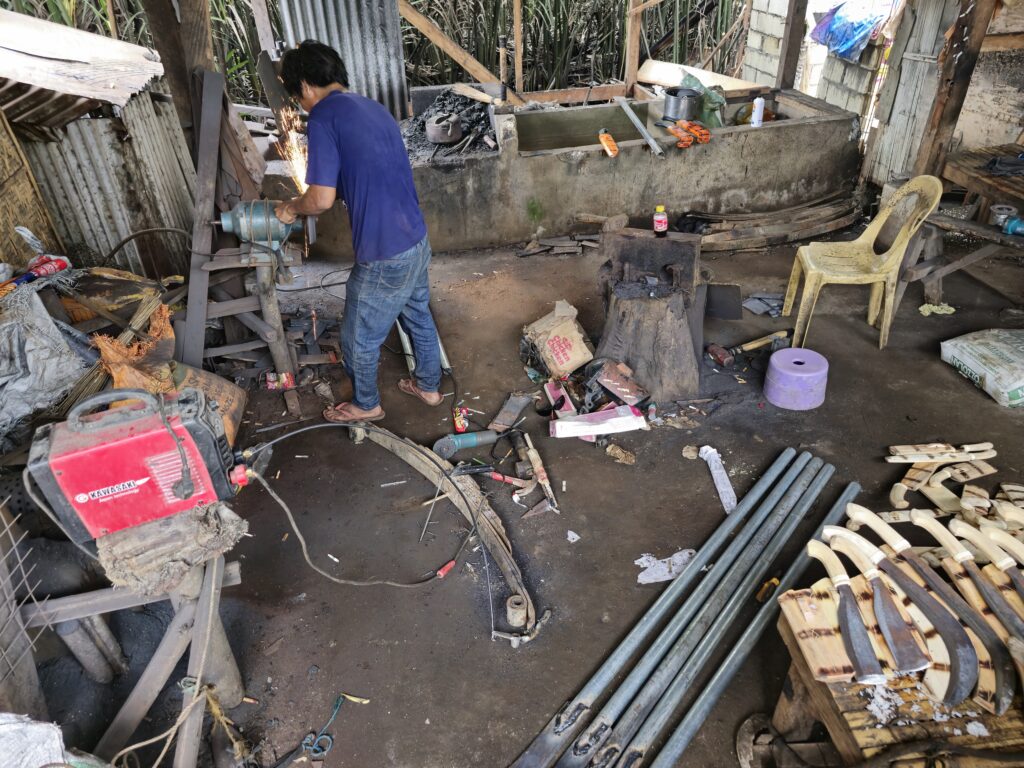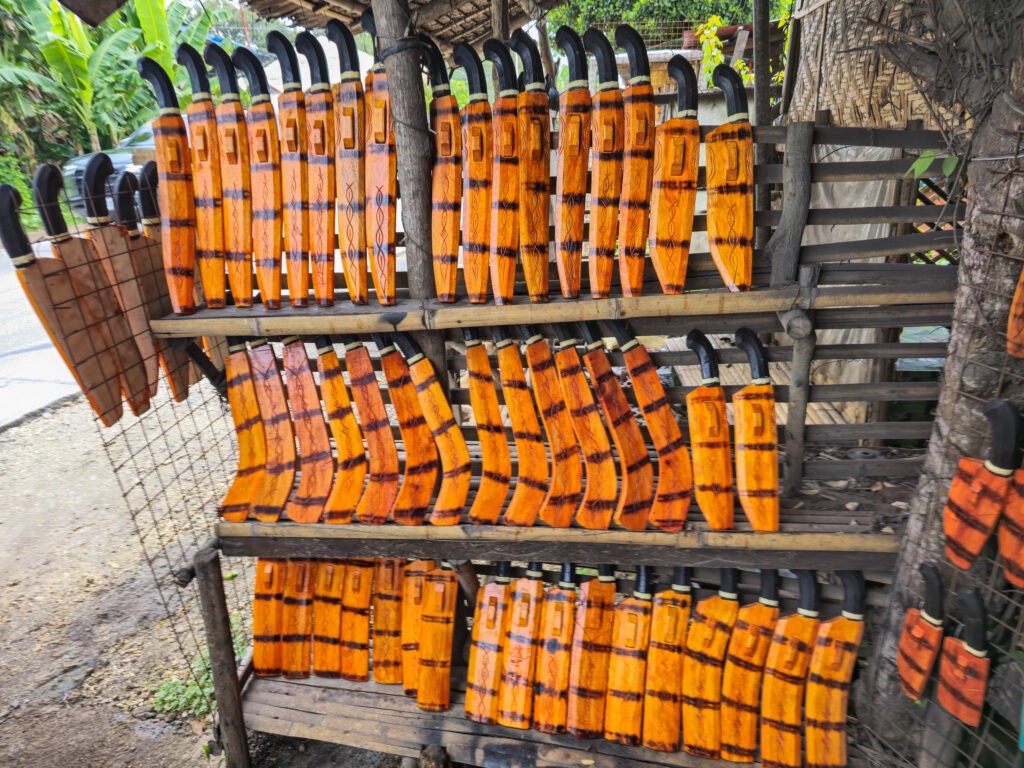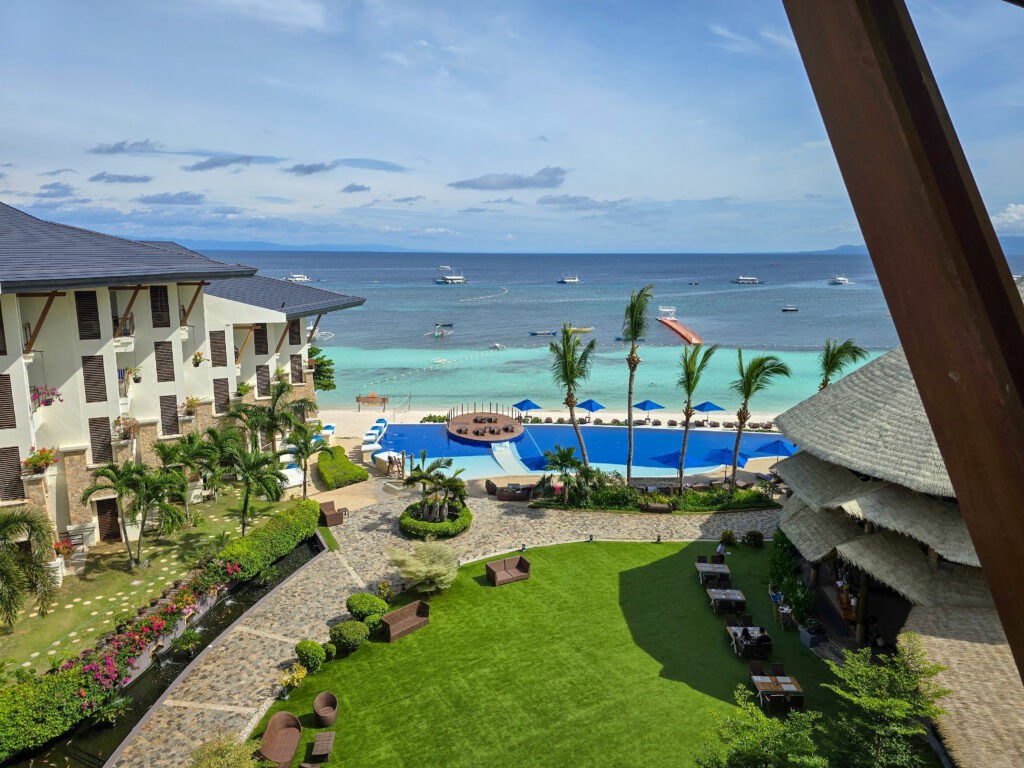During a recent trip to the Philippines, we visited the island of Bohol. We happened to drive through the village of Loay and saw a shop by the road with an enormous number of blades of all sizes and shapes for sale so we stopped.

This was the “Bulaklak Blacksmith” shop and at J233+QFH, in Loay. The maker was busy at a grinder and I can only assume it was his wife showing us his wares. Bohol has a booming tourist industry with beautiful beaches and I am sure this stand was trying to capitalize on this. We were visiting at the beginning of September which is when the tourist season is drawing to a close.
He had produced a huge number of machetes and various knifes of all shapes and sizes. We also saw various types of implements such as steel rake heads, steel poles with heavy cutting heads and more.
What struck me was his shop. There he was with very basic equipment – a forge, anvil, hand tools, a stick welder, grinder, and so forth cranking out his wares.
If you are ever on the island of Bohol, the store and shop make for an interesting stop.






I didn’t think to ask if he sells any blades for locals. I would have really liked to see them. However, we had a schedule to keep as we were going on to see the Tarsiers and Chocolate Hills so we had to get going.
If you have ever wanted to visit and very affordable tropical resort, we stayed at the Bellevue Resort and it was beatiful. Great staff, facility and food.


If you find yourself in Bohol, check out the Bulaklak blacksmith’s shop and if you are looking for a resort, check out the Bellevue. By the way, we were visiting family and I don’t have a habit of jetsetting 🙂
I hope this helps you out.
If you find this post useful, please share the link on Facebook, with your friends, etc. Your support is much appreciated and if you have any feedback, please email me at in**@*********ps.com. Please note that for links to other websites, we are only paid if there is an affiliate program such as Avantlink, Impact, Amazon and eBay and only if you purchase something. If you’d like to directly contribute towards our continued reporting, please visit our funding page.
